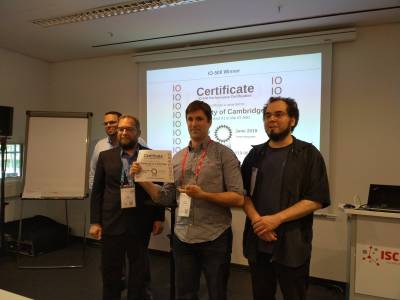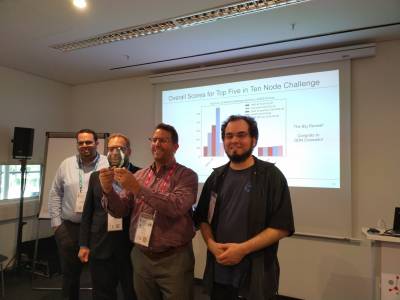Table of Contents
SC'19
This page is preliminary.
The IO-500 and the Virtual Institute of I/O
| Date | November 19th, 12:15-13:15 |
| Venue | Room 205-207, Denver Colorado |
Link to the official announcement.
Abstract
The IO500 is quickly becoming the de facto benchmarking standard for HPC storage. Developed two years ago, the IO500 has released two official lists so far. A BoF highlight is the presentation of the fourth IO-500 list.
The general purpose of this BoF is to foster the IO500 and VI4IO communities to ensure forward progress towards the common goals of creating, sharing, and benefiting from a large corpus of shared storage data. We also serve as a repository of detailed information about production storage system architectures over time as a knowledge base for other researchers and system designers to use.
Goals of the BoF are to 1) reveal the current IO-500 list and provide highlights and insight; 2) advertise the community hub but also discuss and steer the direction of the community effort; 3) to discuss the benefit and direction of the efforts within the community.
The IO-500 benchmark consists of data and metadata benchmarks to identify performance boundaries for optimized and suboptimal applications. Together with comprehensive data from sites, supercomputers, and storage, in-depth analysis of system characteristics are tracked by the list and can be analyzed. In contrast to other lists, the IO-500 collects the execution scripts for providing means of result verification and sharing best practices for data centers.
Goals of the Virtual Institute for I/O are:
- Provide a platform for I/O researchers and enthusiasts for exchanging information
- Foster international collaboration in the field of high-performance I/O
- Track, and encourage, the deployment of large storage systems by hosting information about high-performance storage systems
Expected HPC audience are 1) I/O experts from data centers and industry, 2) researchers/engineers working on high-performance I/O for data centers, 3) domain scientists and computer scientists interested in discussing I/O issues.
The outcome of this BoF will steer the direction of the community efforts.
Agenda
We have a series of interactive talks and discussions.
- The Virtual Institute for I/O – Julian Kunkel
Slides - What's new with IO-500 – George Markomanolis
Slides - Community lightning talks (5 minutes each)
- In-node storage and memory-like I/O – Adrian Jackson (EPCC)
Slides
- Analysis of the IO-500 data – John Bent
- Announcing Winners – George Markomanolis, John Bent, Julian Kunkel, Jay Lofstead
- Roadmap for IO-500 – Julian Kunkel
- Discussion and Voice of the community – Jay Lofstead
We will prime a discussion with some observed issues and open the stage for feedback and issues.

